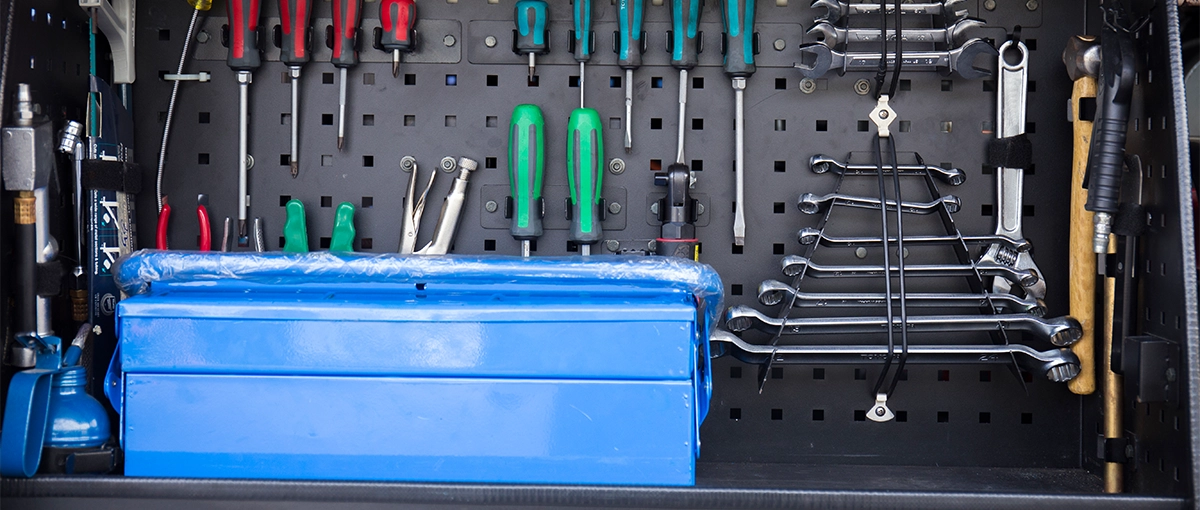Step-by-Step Guide to Cleaning and Storing Your Tools

Keeping tools clean and stored properly might seem like a routine chore, but it’s the difference between equipment that lasts a few months and tools that serve you reliably for years. If you’re someone who regularly invests in industrial supplies, this guide will help ensure that your tools stay in top shape, no matter how demanding the job.
The Importance of Clean Tools
Dirty tools don’t just look bad—they perform worse. Residue, rust, and buildup can affect precision and efficiency. Beyond performance, neglecting maintenance can lead to safety hazards. A clean tool is easier to inspect for wear or damage, helping you avoid accidents on the job.
Step 1: Cleaning Hand Tools
Basic hand tools like wrenches, hammers, and screwdrivers often see heavy use, but their upkeep is straightforward.
- Brush Off Dirt: Start by wiping down tools with a dry cloth to remove loose debris. For caked-on dirt or grime, use a stiff-bristle brush.
- Wash as Needed: If the tools are oily or greasy, a solution of mild soap and warm water works wonders. Avoid soaking tools for long periods, as water can lead to rust.
- Dry Thoroughly: After cleaning, dry tools immediately using a clean cloth. Compressed air can help with hard-to-reach spots.
- Apply Lubrication: For moving parts like pliers or adjustable wrenches, apply a light machine oil to keep them operating smoothly.
- Inspect for Damage: Take this opportunity to check for cracks, bent components, or other signs of wear.
Step 2: Cleaning Power Tools
Power tools require extra care, given their mechanical and electrical components.
- Unplug First: Always disconnect the tool from power before cleaning. For battery-operated tools, remove the battery.
- Clear Debris: Use compressed air to blow dust and debris from vents, switches, and motor housings.
- Wipe Down Surfaces: A damp (not wet) cloth is sufficient for exterior cleaning. For stubborn grime, add a bit of rubbing alcohol.
- Inspect Electrical Parts: Look for frayed cords, loose plugs, or other issues that could pose a safety risk.
- Replace Worn Components: Check parts like blades, bits, or belts. Replace anything showing signs of dullness or wear.
Step 3: Rust Prevention
Rust is a tool’s worst enemy, especially in humid environments or when tools are stored improperly.
- Use Rust Inhibitors: After cleaning, spray tools with a rust-preventative product or wipe them with a lightly oiled cloth.
- Store in a Dry Area: Moisture accelerates rust, so keep tools in a well-ventilated, dry location.
- Add Silica Packs: In toolboxes or storage cabinets, silica gel packs can help absorb excess moisture.
Step 4: Storing Hand Tools
Proper storage is key to maintaining tools and keeping your workspace organized.
- Use Pegboards or Racks: Hanging tools keeps them visible and easy to access.
- Toolboxes for Portability: For those on the move, a well-organized toolbox ensures tools are protected and easy to find.
- Drawer Liners: In cabinets, non-slip liners prevent tools from shifting and getting damaged.
Step 5: Storing Power Tools
Power tools demand special attention to avoid damage and ensure safe storage.
- Use Original Cases: Many power tools come with custom cases designed for protection during storage and transport.
- Hang Larger Tools: For items like drills or saws, wall-mounted storage systems work well.
- Remove Batteries: Storing batteries separately prolongs their life and prevents accidental activation.
Long-Term Storage Tips
Sometimes tools aren’t used for months. Proper preparation for long-term storage will save you headaches when it’s time to bring them back into action.
- Coat Metal Parts: Apply a protective oil to all exposed metal surfaces.
- Wrap in Plastic or Cloth: Tools stored in a workshop or garage may benefit from being wrapped to keep out dust and moisture.
- Periodic Checks: Even when not in use, inspect tools periodically to ensure they remain in good condition.
Stories from the Field
A machinist once shared how neglecting simple maintenance cost him a prized caliper. Left unchecked in a damp toolbox, it rusted beyond repair. From that day on, he implemented a strict cleaning and oiling routine, saving countless tools from a similar fate.
Another example comes from a contractor who regularly serviced his drill but ignored the charger. One faulty contact later, the entire unit was out of commission. Now, his cleaning regimen includes every accessory, not just the tool itself.
Tools for Tool Maintenance
Investing in a few specialized items makes the cleaning and storing process easier:
- Wire Brushes: Perfect for cleaning rust or hardened grime.
- Rust Prevention Sprays: Products like WD-40 or Boeshield T-9 are great for protecting metal.
- Compressed Air: A quick way to clear debris from tight spaces.
- Microfiber Cloths: Gentle on surfaces and excellent for applying oils or rust inhibitors.
A Routine Worth Keeping
Establishing a regular cleaning and storage routine takes minimal time but pays off in better performance and fewer repairs. Whether you’re working with delicate precision tools or heavy-duty equipment, a little care goes a long way.
And remember: tools are an investment. Treat them well, and they’ll return the favor by performing reliably for years.


